Porcelain Veneers San Francisco
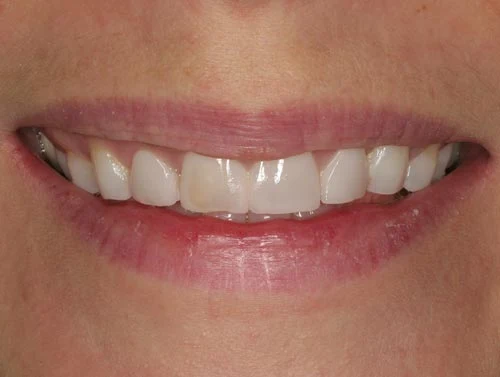
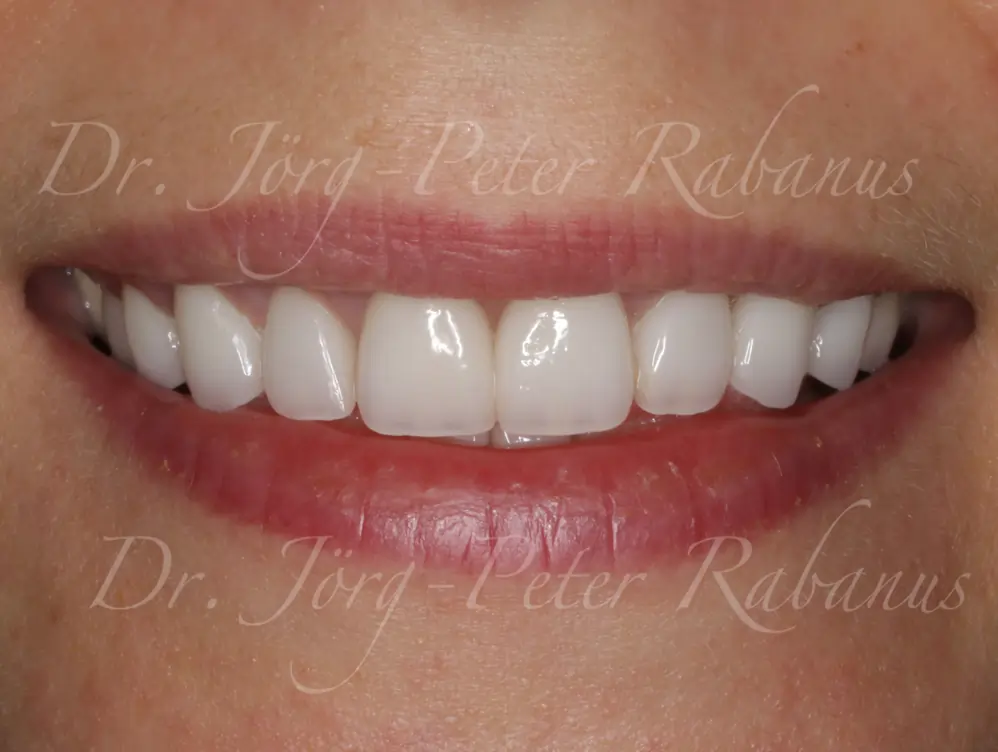
Porcelain veneers are the most popular cosmetic dental products for smile makeovers. Dr. Jorg-Peter Rabanus, top cosmetic dentist in San Francisco, accredited by the American Academy of Cosmetic Dentistry, has designed countless radiant smiles with dental veneers and is well experienced in designing natural veneers for his smile makeovers.
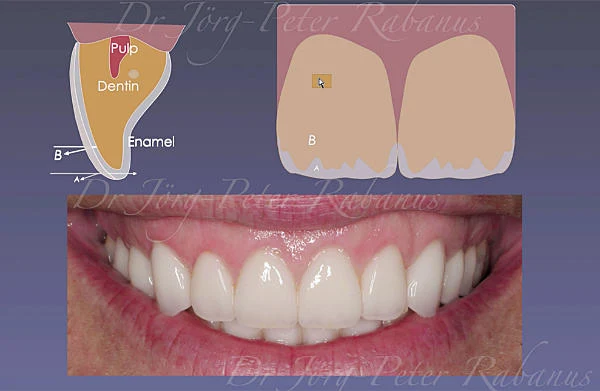
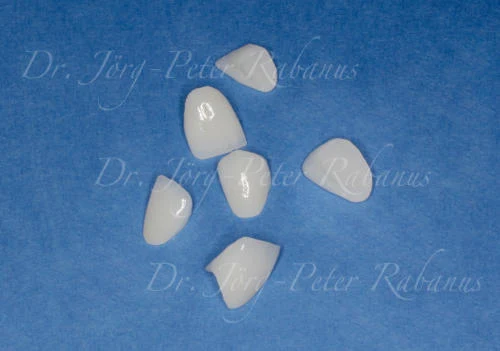
AACD-accredited, leading cosmetic dentist San Francisco, Dr. Jorg-Peter Rabanus, explains how dental veneers are designed and what they can do for a smile rejuvenation.
-
What Exactly are Porcelain Veneers?
-
How Do Porcelain Veneers Compare to Natural Teeth?
-
Porcelain Veneers or Ceramic Crowns? What is the Difference?
-
Porcelain Veneers For "Instant" Orthodontics? How is this Possible?
-
What Are Prepless Veneers?
-
Smile Design with Porcelain Veneers - Sequential TreatmentSteps
-
How Long Do Veneers Last?
-
Price of Porcelain Veneers in San Francisco
-
Additional Frequently Asked Questions About Veneers
-
Porcelain Veneers San Francisco Summary
What exactly are porcelain veneers?
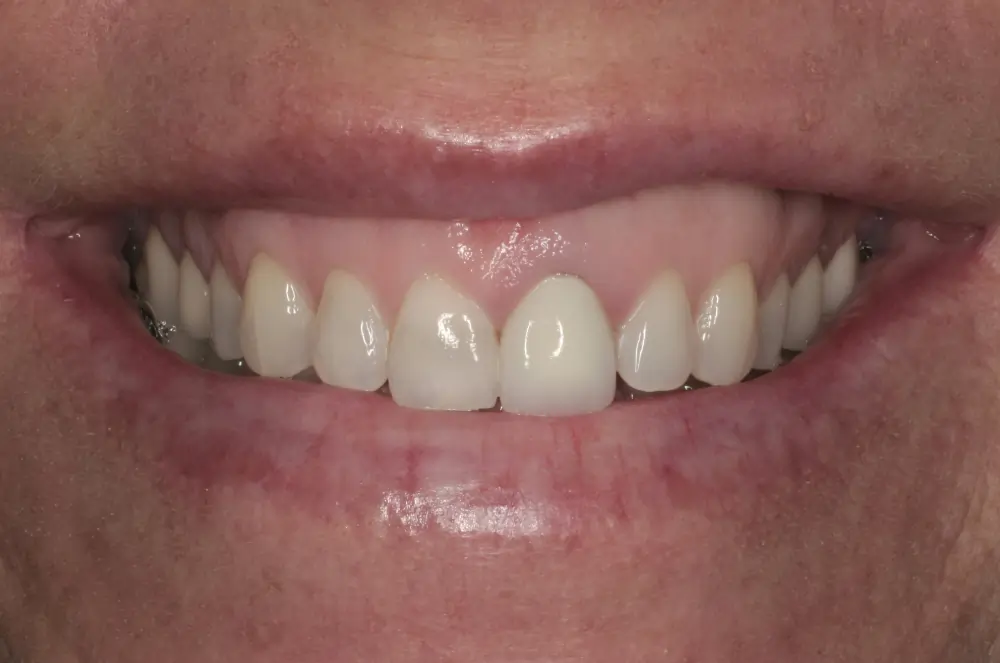
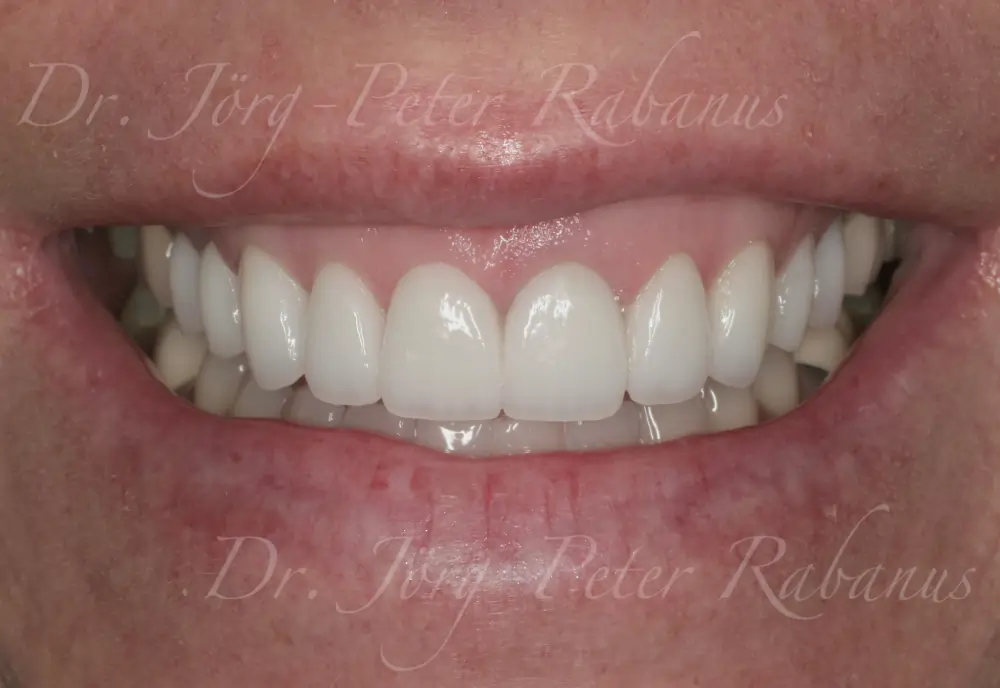
The porcelain that veneers are made of, has developed significantly over the years. Early dental materials involved using metal, but people's desire to obtain natural-looking smiles that endure the test of time encouraged the dental industry to explore and develop dental porcelains that would fit the specific conditions of the oral cavity and teeth. Perfect smiles are in the eyes of the beholder. New smiles are custom crafted to address the individual esthetic goals of a patient.
The dawn of dental porcelains began in the 18th century, but was still far away from any durable smile makeover. Composed of feldspar, quartz, and kaolin, it took another 200 years to develop compositions of dental porcelains that would closely mimic the translucency, shade, value, and chroma of natural teeth.
Veneers are fabricated of biocompatible materials, such as porcelains and composites. The meaning of the general term "veneer” is a uniting of superposed layers of a protective material by an adhesive or other means to a more vulnerable layer. This is what we do in cosmetic dentistry.
Evidently, mimicking the beauty of natural teeth is only one aspect of porcelain veneers. No matter how pretty a smile makeover, it has to withstand the test of time. There is no way around it!
The physical and chemical attributes of dental porcelains that are used for veneers are described in greater detail in the assay on What are porcelains?
How do porcelain veneers compare to natural teeth?
Evidently, porcelain is a synthetic material, while natural teeth are created through natural ontogenetic processes. Highly specialized cells form, through interaction during embryogenesis with each other, enamel and dentin. Enamel consists of 96% inorganic matrix, 4% organic constituents, such as proteins and lipids, and 4% water. Dentin is about 70% inorganic matrix, 20% organic, and 10% water. Due to their physical properties, natural teeth are more adaptable than porcelain veneers.
A frequently question asked by my patients is:
"Do I Need Porcelain Veneers or Ceramic Crowns?”
What is the difference? The only difference between porcelain veneers and dental crowns is the amount of tooth surface that needs to be replaced or restored. Dental crowns cover the entire tooth. Damaged teeth and/or broken teeth need to be restored. Porcelain is the material of choice since dental bonding became strong and durable. The type of porcelain for veneers and dental crowns is the same. Their functional and aesthetic attributes are identical. This is why porcelain veneers and porcelain crowns can be mixed.
Most smile makeovers require the inclusion of teeth that are severely compromised. Some teeth may require substructures that are made of dental materials that match the aesthetics of deeper structures of teeth as well as carry most of the compressive, tensile, flexural, and shear stresses that teeth are exposed to when functioning in biting, chewing, and grinding.
Then we have this confusing term of “instant orthodontics.” The question arises:
How Do Porcelain Veneers Render “Instant Orthodontics?"
Veneers do not really replace orthodontics, which requires the physical movement of entire teeth, from incisal edges, dental cusps, to root tips, leading to an ideal dental alignment among all teeth. Orthodontics straightens teeth, corrects bite issues, improves oral function, and prevents future dental problems. It is attained without any reduction or shaving of tooth surfaces.
Besides prepless veneers, orthodontics is the least invasive address to dental misalignments.
What Are Prepless Veneers
Minimally invasive dentistry with porcelain veneers do not require the removal of a lot of enamel. While prepless veneers are never obtained without some kind of tooth preparation for a proper marginal fit, they are made from ultra-thin layers of porcelain, which are then bonded to the tooth surface without significantly altering the teeth’s shape or shape. Hence, dental veneers are a valuable alternative when teeth whitening is not possible due to tooth sensitivity.
Prepless veneers are limited when it comes to comprehensive smile makeovers, which often involves severely deteriorated teeth due to decay, wear, and the consequences of bruxism and similar parafunctions.
However, for simple aesthetic smile enhancements, such as discolorations, minor chips, small gaps, or slightly misaligned teeth, they have become the most conservative dental treatment modality.
A big advantage of prepless porcelain veneers is that they may be more easily reversible compared to traditional veneers.
Smile Design with Porcelain Veneers - Timeline
(How many visits does it take?)
The timeframe for the creation of a smile makeover depends on many factors. From simple prepless porcelain veneers to a comprehensive smile makeover with a full reconstruction of worn teeth and conditions with maligned jaws, the number of smile-design sessions with your dentist may vary.
When tooth whitening is not an option, a straightforward dental treatment case that only addresses aesthetic issues of smile and teeth can be completed within one week.
However, the most important aspect of a smile design is always a thorough two-way communication between the dentist and the patient.
The best dentist who is in charge of delivering a smile that best fits the patient needs and wants to understand the patient’s exact goals and his/her current dental condition in every detail. The best cosmetic dentist takes responsibility to thoroughly communicate the outcomes that can possibly be achieved. Realistic expectations by the dental patient can only be established by absolute adherence to a communication protocol.
Integral part of a smile makeover are temporary veneers which mimic the final outcome, minus the aesthetic details of the final natural porcelain veneers, which include incisal translucency, “halo” effects, mammellons, incisal dips and grooves, among other various functional and aesthetic details.
Since porcelain veneers are expensive, one of the most frequently asked question is:
How Long Do Veneers Last?
Great question!
The answer is found in numerous longitudinal studies, which are described in Longevity of Porcelain Veneers The short answer is that veneers last a long time.
Patients frankly never ask directly:
"How Much Do Porcelain Veneers Cost?"
They are uncomfortable about this specific question. However, doubtlessly, everybody wants to know. And as much as goals and dental conditions differ for each patient, the cost of porcelain veneers vary. An accurate estimate about possible treatment fees for a smile makeover with porcelain veneers can only be given after the patients’ goals and their current dental conditions have been entirely established.
Additional Frequently Asked Questions About Porcelain Veneers:
Does My Dental Insurance Plan Cover Veneers?
Only if oral structures need to be restored due to dental and/or periodontal disease as outlined by each individual insurance policy.
Do Porcelain Veneers Stain?
Think of glass! Does glass stain? No! Does a glass ceramic stain? Neither! In fact, porcelain veneers are less likely to stain than any natural tooth enamel, which is porous and just doesn’t have the glazed and impenetrable surface of glass or glass ceramics.
Additional information about various aspects of porcelain veneers are found on the following pages:
Do You Want Your Veneers To Look Natural?
Best Porcelain Veneers
More About Porcelain Laminates
New Cases Dental Veneers
Smile Makeovers With Veneers
Porcelain Veneers in San Francisco Change Lives
Smile Designs With Dental Veneers
Porcelain Veneers Summary
Veneers are fabricated of biocompatible materials, such as porcelain, composite acrylics, or combinations of different porcelains or ceramics. Porcelain veneer treatment is a meticulous process from diagnosis of dental condition to placement of the new veneers.
Porcelain laminate is an older term for porcelain veneer. The term laminate comes from the latin word 'lamina' which means 'thin plate' or 'scale.' In the era of minimally invasive dentistrythese thin porcelain veneers are first choice for smile makeovers. The definition for the general term "lamination is a uniting of superposed layers of a protective material by an adhesive or other means. This is what we do in cosmetic dentistry.
Best porcelain veneers are fabricated by specific cutback and layering techniques, which render the most natural, youthful, and playful look of a smile. The times of china-white "Hollywood smiles" are over. It is not desirable to anyone to give away that he or she has a smile makeover. The main reason why patients come to Dr. Rabanus to have old veneers replaced is their unnatural, opaque, and monochromatic appearance, which is even less acceptable due to often missed elementary design requirements that are discussed elsewhere in this website.
Veneer comes from the german word furnier, thin shells of wood adapted for adherence to a smooth surface. Porcelain veneers have principally the same protective and aesthetic function. They are thin layers of high-quality materials that are bonded to dental surfaces, such as enamel or dentin. Composite and porcelain dental veneers are the most common procedures offered by dentists who specialize in smile makeovers. They have many applications, such as:
- strengthening of weakened enamel,
- restoration of eroded and worn enamel,
- veneering with a whiter layer of porcelain to mask heavily stained teeth, and
- creating more youthful attributes, by incorporating incisal translucency, harmonic line angles, and the proportions of young teeth.
We will constantly update the information about porcelain materials and the technology that are used for these purposes.
Porcelain veneers are a rapid, aesthetic, and safe way to correct unattractive front teeth. They correct heavy dental stains, teeth that are crooked, disproportionate, relatively small (with spaces), and structurally damaged. As mentioned above, they are shells of ceramic/porcelain material that can be chemically bonded to the surface of the tooth, either enamel or dentin. Dental veneers are the most popular treatment modality for comprehensive smile makeovers.
One of the most significant breakthroughs in dentistry has been the development of new adhesion techniques and cosmetic dental porcelains) that enable the dentist to successfully adhere organic tissues and inorganic materials to each other.
The bonding between a porcelain veneer and the natural tooth surface is very strong if done correctly. It can be so great that an accidental trauma of a veneered tooth may cause a fracture within the tooth structure and not at the interface of porcelain veneer to prepared tooth surface.
Bonded to tooth structure, certain porcelain veneer materials display similar physical properties as natural enamel. In addition, with the advance of ceramic technology, natural layers and youthful translucencies of vital teeth can be perfectly mimicked.
For further information, go to page "Materials and Methods" in the section "Technical Specifications."
Smile makeovers with porcelain veneers often involve just one diagnostic and two treatment visits. The first visit is for diagnosis and dental impressions that are used to create a diagnostic wax-up on study models. During the second visit, the information obtained with the model analysis and the diagnostic wax-up will be used to prepare the teeth. Master impressions of the prepared teeth will be taken. Temporary acrylic veneers are created with acrylic-filled matrices that are molds of the diagnostic wax-up. Hence, the temporary veneers look exactly like the diagnostic wax-up, allowing the patient and their dentist to evaluate their appearance and comfort in the patient's mouth. The processing at the dental laboratory usually takes two weeks. The final porcelain veneers are permanently bonded at the last office visit.
How much tooth structure needs to be removed? [Video]
Many dental patients are concerned about the need to shave their teeth to create space for their veneers. Hence, every dentist is being asked about the extent of tooth reduction. The answer is not uniform and depends on the clinical situation of the teeth and the goals. This video explains the considerations that have to take place when preparing teeth for porcelain restorations with adherence to minimally invasive dentistry.
San Francisco is a progressive city of the highest standards. The creative people of San Francisco deserve the best dentistry has to offer.
Want a new smile? Check out the American Academy of Cosmetic Dentistry and learn what it means to obtain a cosmetic solution for your teeth by an AACD-accredited dentist. Veneers in San Francisco are a common request for smile makeovers: the inhabitants of San Francisco just don't make any compromise when it comes to quality of their dental care, indendently of veneers' cost.
Could someone have avoided the need for a smile makeover with regular dental cleanings? Probably not in all cases. Most patients in San Francisco seek dental veneers that blend in with their surrounding teeth for purely esthetic reasons. How much do veneers cost? Find out and schedule your consultation with Dr. Jorg-Peter Rabanus to get an idea what modern dentistry can do for your confident smile and for the enhancement of your natural beauty. It might be time to get a new smile.
Dr. Rabanus' dental office is located at Cosmetic Dentist San Francisco.




